Improving sustainability and reducing food waste should be a goal of any restaurant (or deli), and with the proper planning and creative thinking, isn’t terribly difficult to accomplish.
In your home kitchen, you’ve surely found that certain undesirable or inedible parts of food—carcasses, stems, papery vegetable skins, et cetera—make some of the best broths and stocks, and the burnt bits clinging to the pan are the basis of the most flavorful sauces. And of course organic material properly handled eventually yields nutrient-rich soil. One can extrapolate this philosophy to many areas of food production and life in general.
We need to move away from the idea that the unaesthetic, or not immediately necessary, parts of food are bad, or “waste,” or in some capacity destined for the trash. Today, let’s look at the ways we at NWS make the most of our food production. We’re not a perfect example of sustainability and optimization in food production, but we’re always looking for ways to innovate and improve.
Crostini/Croutons.
Bread—it’s gotta be fresh, right? For a sandwich, we wholeheartedly agree with you. That’s why we methodically cycle through frozen loaves of our haus-baked Pullman rye and white bread loaves, and bake off hero rolls and haus-baked ciabattas steadily throughout the day.
But sometimes there’s a slow few days, or too many heroes and ciabattas for a slow evening. Sometimes the closers like to bring a few rolls home, but relying on that just isn’t sufficient.
The solution was simple—throw them into freezer-ready bags, and let them dry out in the deep freeze. The moisture-sapped bread, though somewhat tedious to cut through, is primed for making crostini and croutons.
Cut them to the appropriate size and shape, spread them out in a single layer on a sheet pan, dress them with olive oil, garlic powder, coarse salt, and dry thyme. Bake at 350°F for 10-15 minutes (know thine oven!) rotating the pan once at the halfway mark. Guess what: You’ve got crostini (or croutons!)
Smoked Salmon Pâté.
We could make our smoked salmon pâté exclusively with whole pieces of smoked salmon. That would be fine—in fact, it would be good. It would also mean we’d need to order and process twice as much fish.
Somewhere along the line we found an elegant solution to this problem. We prep Cajun, Traditional, and Black Pepper & Coriander smoked salmon daily for our sandwich line. Only the finest slices of that smoked salmon end up in sandwich portions.
(An adjacent category is the salmon that, during the kippering process, just becomes overwhelmingly moist and practically falls off the skin. This salmon is great for eating, but doesn’t look as nice as a gift, or on a platter, or as we’re placing it on the scale to weigh it.)
This is more for ease of use on our end of things than it is for the customers receiving the sandwiches. It all tastes roughly the same, and some would even argue that the seasoned belly-fat scraps taste a little bit better.
That’s why they end up in the pâté. The “scraps” of “waste” from prep are oily and have a steeper ratio of seasoning to meat, and most importantly, they’re not going in the garbage. Additionally, we have the flexibility of making smoked salmon pâté on a daily basis (if need be) without needing to take salmon out of our fish case.
By the way, our debut cookbook, which is currently in development, will feature a recipe for making NWS Smoked Salmon Pâté from a single chunk of Traditional Smoked Atlantic Salmon, so you can take matters into your own hands!
Snack Stick Ends.
The main problem with selling our non-fish snack sticks (Bison Buddies, Big Jims, and Royales With Cheese) by unit price ($3/per, $2/per, and $2/per respectively) is the need to make those units a consistent side. This means we cut about 1/2” off of each stick. These ends get vacuum sealed and tossed in the deep freeze. To combat this mountain of cured meat nubs, we’ve implemented a handful of plans.
1.) When we have cheese curds, we package cheese curds and meat nubs and sell them out of the Grab & Go case.
2.) Sometimes we just package meat nubs with each other and sell them out of the Grab & Go case.
3.) Frequently, Patricia will have an awesome pasty idea that utilizes some of the meat nubs, and I bet you can guess where we sell them.
4.) And, of course, they make great fodder for sample platters in the deli.
Dip Sauce.
The zesty three-pepper sauce we serve alongside our Big Dipper sandwich is not only delicious—it is also very clever. Preservative liquids may not make the tastiest beverages, but they’re basically water, salt (sometimes sugar), vinegar, and seasonings, so they can easily be repurposed.
Our Royale With Cheese snack sticks include pickle juice in the recipe to emulate the pickle slices on a bacon-cheeseburger. The dip sauce contains a sacred/secret ratio of the following—liquid from the roasted red pepper can, liquid from the pepperoncini (pickled sweet yellow peppers) tub, and a healthy dose of sriracha.
Sure, it’s easy enough to just dump such things down the drain, but next time you’re thinking about dumping your kimchi juice, or pickle juice, or what have you, down the drain—think again. There’s seasoning potential with which to experiment.
Fish Skin Dog Treats.
The skin of your smoked fish is not garbage. We used to compost them, but recently we’ve had a change of heart. Pets love fish skins—certain mushers in the area have even come to us asking for fish skins to feed their sled dogs.
However, keeping those skins around in our cooler is poor management of space. Again, the solution is simple: Bake them. You can do this quite easily with your own leftover fish skins.
Preheat your oven to 350°F. Scrape the excess fat and meat off of the fish skins and place them on a baking sheet in a single layer, scale side up. Bake them for 10 minutes, rotating the pan at the halfway point.
After they cool, you’ve got some shelf-stable snacks for your pets. They break into smaller, bite-sized pieces easily, and animals love them.
If your animals have plenty of treats, or if you’re living in an animal-free zone and still want to make the most of your fish skins, just salt them (with coarse sea salt) right out of the oven, while they’re still hot. Now, instead of animal treats, you’ve got a nice little salty snack, or salad topping, or whatever you might want to do with a crispy, salty fish skin.
How do you save on waste in your kitchen? We'd love to know. Leave some love in the comments.








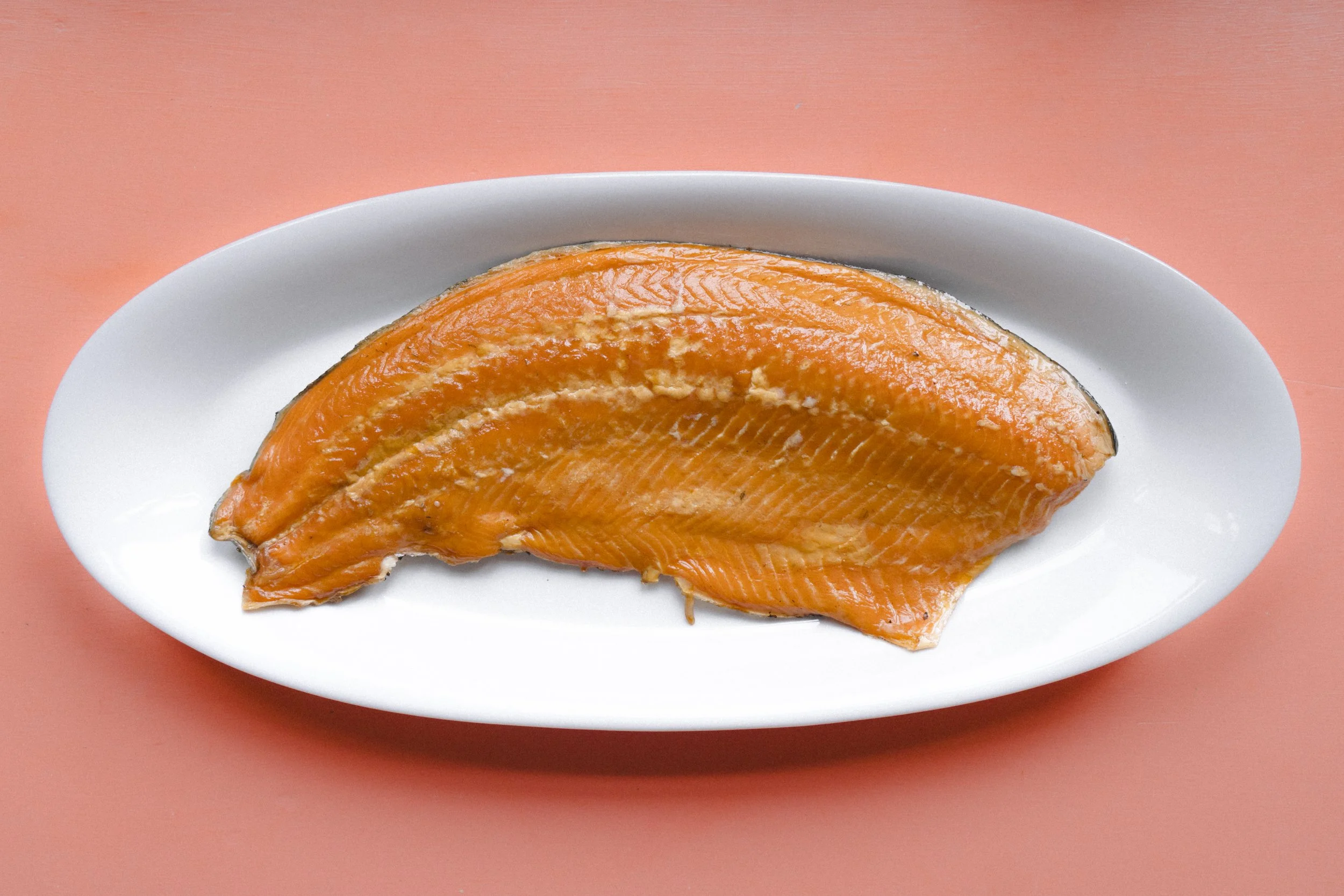
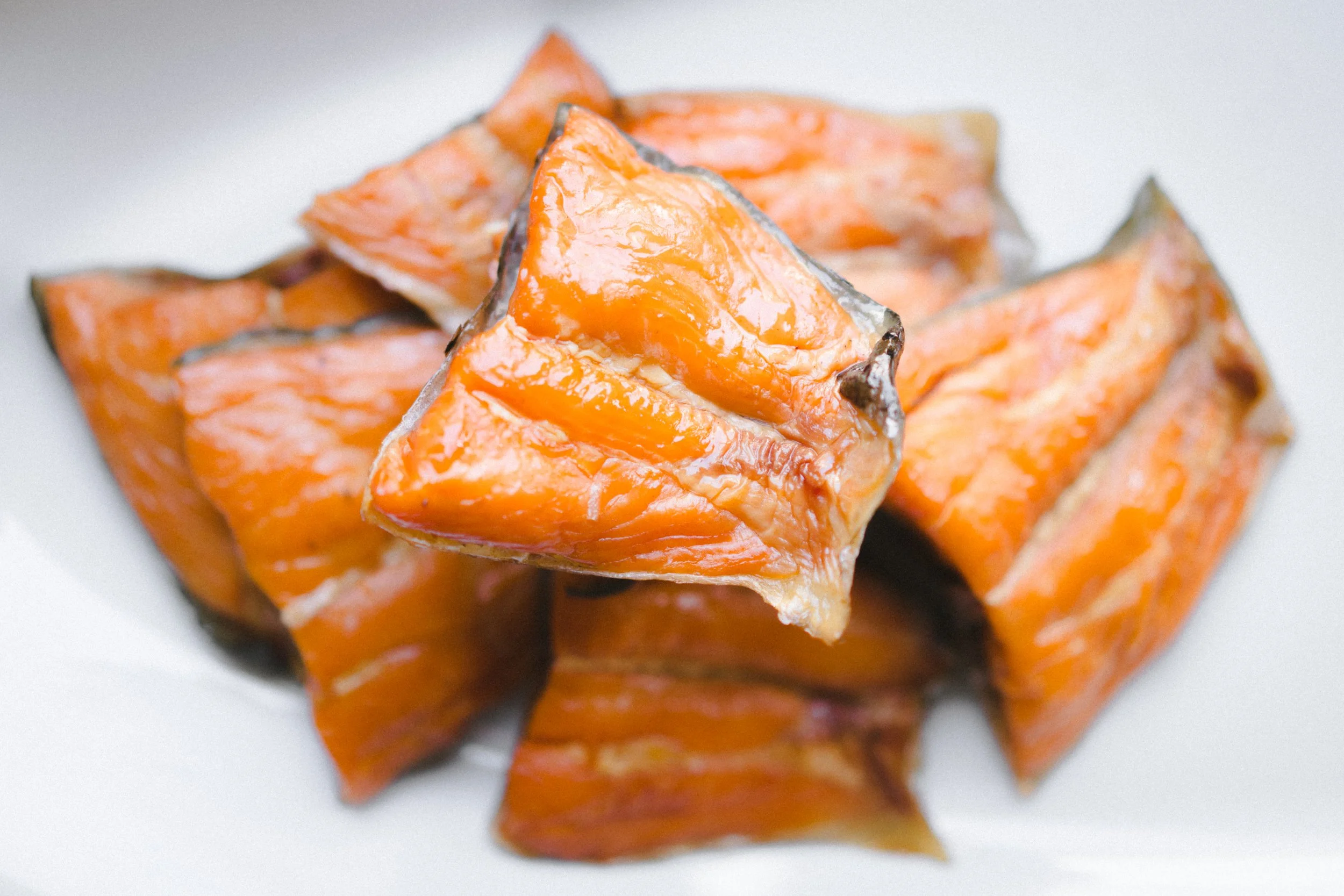
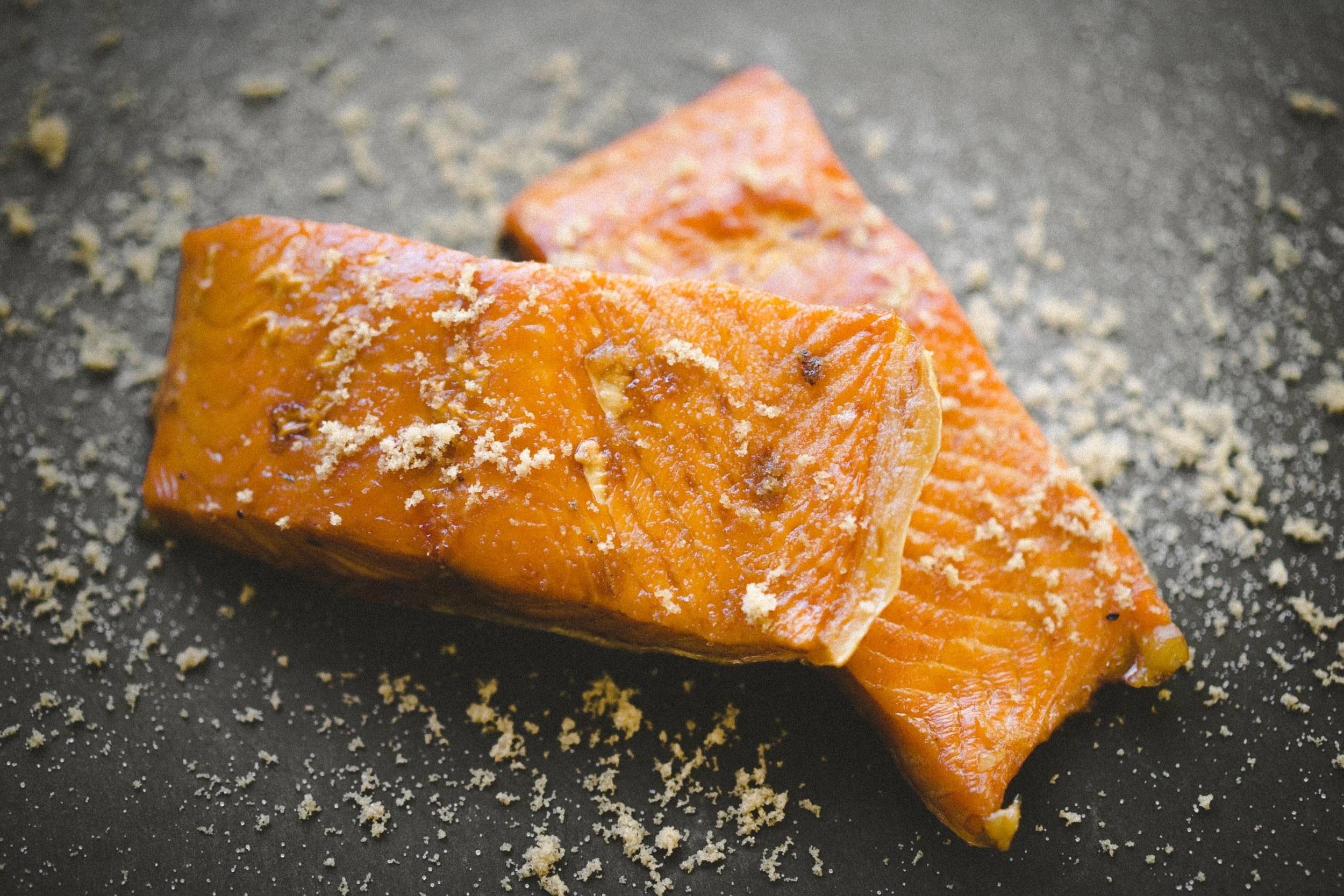
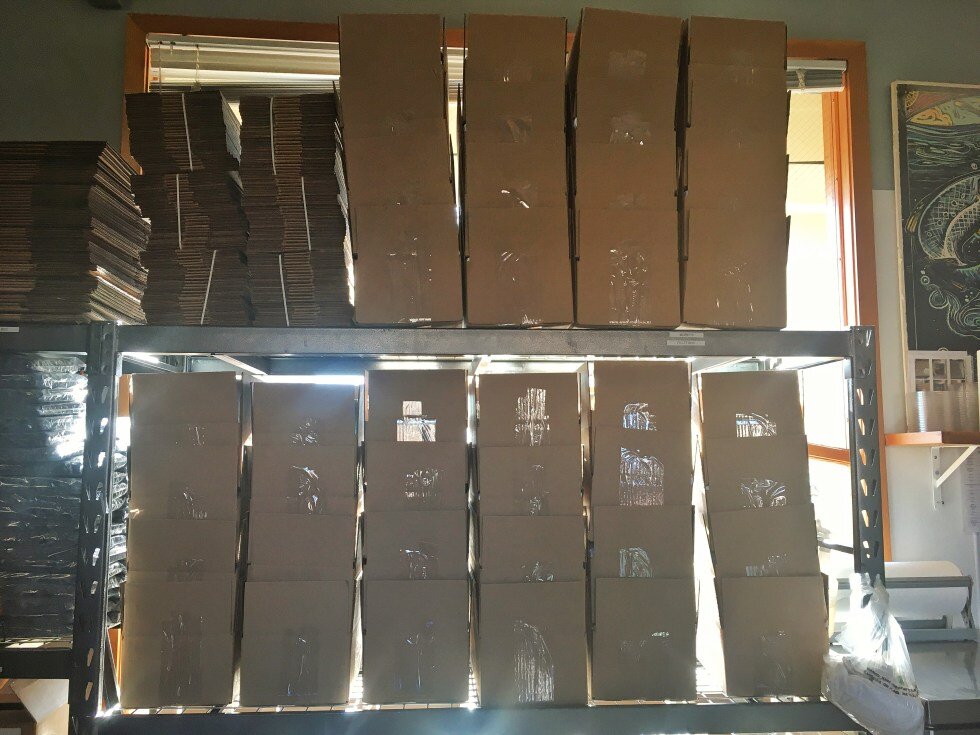

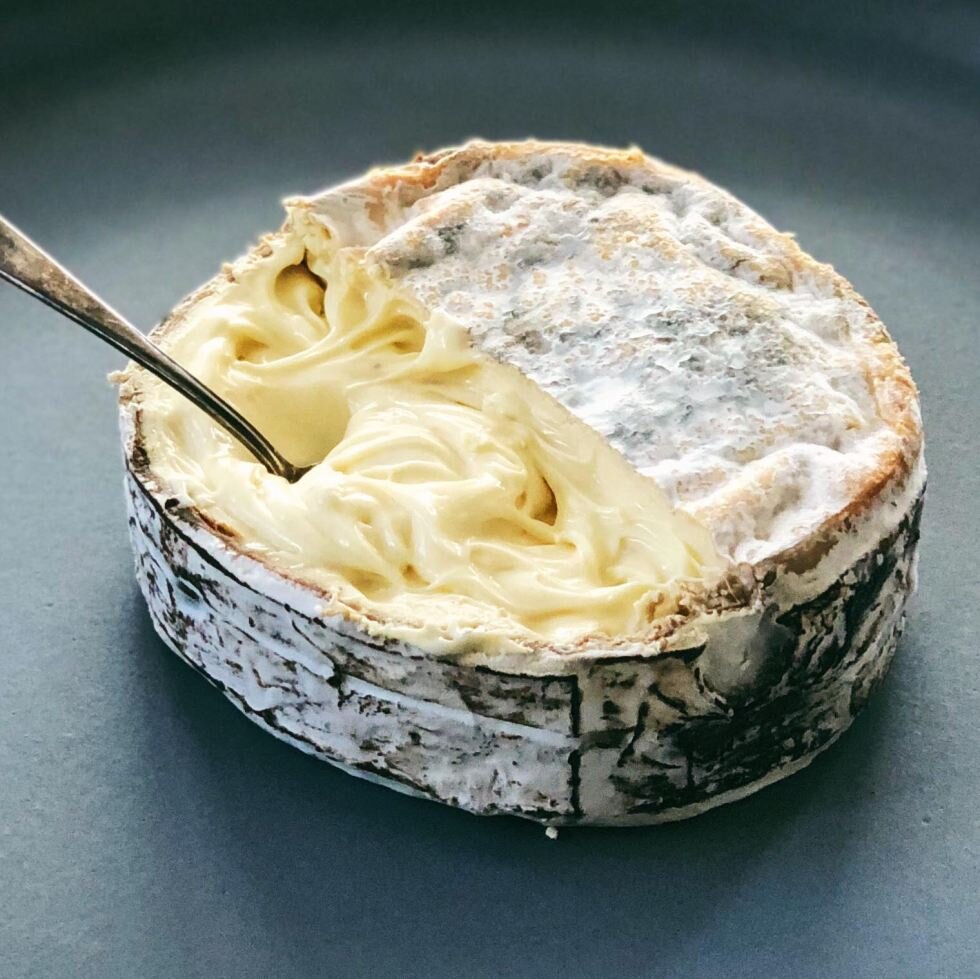






Our signature Smoked Atlantic Salmon is a perfect marriage of salt, sugar, and smoke. It’s hard to beat this old standby. We use only the highest quality boneless Atlantic salmon. We hand-trim, brine, then smoke each fillet with our special wood blend, then package it without the use of artificial colors or preservatives. To read more about our Atlantic salmon, hop on over to our blog. This mouth-watering salmon is also used in our Northern Bagel Sandwich Kits. A sandwich on our deli menu since 2001.
1 piece, about 1/2 pound